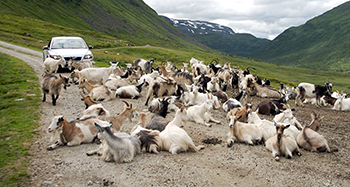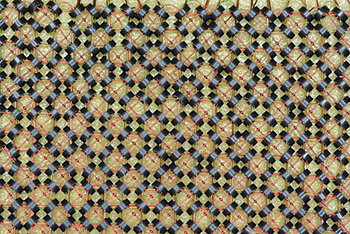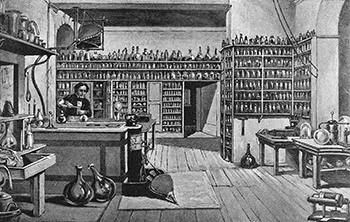
Do one thing…
I don't want barely distinguishable tools that are mediocre at everything; I want tools that do one thing and do it well.
 I’ve been lamenting the demise of the Unix philosophy: tools should do one thing, and do it well. The ability to connect many small tools is better than having a single tool that does everything poorly.
I’ve been lamenting the demise of the Unix philosophy: tools should do one thing, and do it well. The ability to connect many small tools is better than having a single tool that does everything poorly.
That philosophy was great, but hasn’t survived into the Web age. Unfortunately, nothing better has come along to replace it. Instead, we have “convergence”: a lot of tools converging on doing all the same things poorly.
The poster child for this blight is Evernote. I started using Evernote because it did an excellent job of solving one problem. I’d take notes at a conference or a meeting, or add someone to my phone list, and have to distribute those files by hand from my laptop to my desktop, to my tablets, to my phone, and to any and all other machines that I might use.
But as time has progressed, Evernote has added many other features. Some I might have a use for, but they’re implemented poorly; others I’d rather not have, thank you. I’ve tried sharing Evernote notes with other users: they did a good job of convincing me not to use them. Photos in documents? I really don’t care. When I’m taking notes at a conference, the last thing I’m thinking about is selfies with the speakers. Discussions? No, please no. There are TOO MANY poorly implemented chat services out there. We can discuss my shared note in email. Though, given that it’s a note, not a document, I probably don’t want to share anyway. If I wanted a document, even a simple one, I’d use a tool that was really good at preparing documents. Taking notes and writing aren’t the same, even though they may seem similar. Nor do I want to save my email in Evernote; I’ve never seen, and never expect to see, an email client that didn’t do a perfectly fine job of saving email. Clippings? Maybe. I’ve never particularly wanted to do that; Pinboard, which has stuck to the “do one thing well” philosophy, does a better job of saving links. Read more…

The first rule of management: Resist the urge to manage
The O'Reilly Radar Podcast: Ben Collins-Sussman and Brian Fitzpatrick on leadership, teams, and culture.
Subscribe to the O’Reilly Radar Podcast to track the technologies and people that will shape our world in the years to come.
In this week’s Radar Podcast, I sit down with Google engineering site lead Ben Collins-Sussman and Tock founder and CTO Brian Fitzpatrick.
The two have just released a new book, Debugging Teams, a follow-up to their earlier book, Team Geek. We talk about the new edition, how managing is a lot like being a psychotherapist, and how all their great advice plays out in their own lives. Enjoy the show.
Here are a few snippets from our conversation:
Collins-Sussman: The first rule of management is resist the urge to manage. … a manager’s main job is not to bark commands, but to actually aid the team and provide cover, do whatever it takes to remove roadblocks and make them more efficient. Really, being a manager is about getting out of the way and trying to figure out what they need.
Fitzpatrick: Another thing is, when you become a leader, people will come to you and ask questions. They’ll come to you and ask you for advice, and the best thing you can do is ask them questions right back. It’s not being dishonest, or disingenuous, or evasive … If you ask them questions like, ‘What do you mean by this?’, or ‘What are you thinking of?’, or ‘What do you like to do?’ or, ‘How do you feel about this?’, you can gently guide them a little bit by the questions you ask, but really make them think. After a few minutes of questioning, they’ll come up with their own answer.

Helping Things in the IoT speak the same language
We need to build APIs for Things that are interoperable — we need an application layer for the IoT.
Register for our free webcast “Building IoT Systems with Web Standards,” which will be hosted by Vlad Trifa and Dominique Guinard on December 8, 2015, at 10 a.m. PT.
When the term “IoT” was first coined, the idea was to move from a model where data is generated by humans bridging media gaps between the physical and the virtual worlds to a model where data is gathered by the Things themselves.
Fifteen years later, we’re moving in the right direction to make this a reality, but we still have several challenges ahead. One major challenge is interoperability: many Things do talk using the Internet, but they don’t talk the same language. Having been involved in the IoT for about as long as it’s been around, I’m pretty sure of one thing: a universal networking protocol for the IoT will never exist — and for a good reason! The IoT is a vast world where the needs of one field (e.g. Industry 4.0) to another (e.g. the smart home) are fundamentally different. As a consequence, the list of automation protocols is actually growing, not shrinking.
A consequence of these different needs is the focus on the connectivity aspect of the IoT. This is not unusual, but as we ascend the pyramid of IoT needs, we must think about the data interoperability of Things. We need to build APIs for Things that are interoperable; in short, we need an application layer for the IoT.

Open source lessons for synthetic biology
What bio can learn from the open source work of Tesla, Google, and Red Hat.
When building a biotech start-up, there is a certain inevitability to every conversation you will have. For investors, accelerators, academics, friends, baristas, the first two questions will be: “what do you want to do?” and “have you got a patent yet?”
Almost everything revolves around getting IP protection in place, and patent lawyer meetings are usually the first sign that your spin-off is on the way. But what if there was a way to avoid the patent dance, relying instead on implementation? It seems somewhat utopian, but there is a precedent in the technology world: open source.
What is open source? Essentially, any software in which the source code (the underlying program) is available to anyone else to modify, distribute, etc. This means that, unlike typical proprietary development processes, it lends itself to collaborative development between larger groups, often spread out across large distances. From humble beginnings, the open source movement has developed to the point of providing operating systems (e.g. Linux), Internet browsers (Firefox), 3D modelling software (Blender), monetary alternatives (Bitcoin), and even integrating automation systems for your home (OpenHab).
Money, money, money…
The obvious question is then, “OK, but how do they make money?” The answer to this lies not in attempting to profit from the software code itself, but rather from its implementation as well as the applications which are built on top of it. For the implementation side, take Red Hat Inc., a multinational software company in the S&P 500 with a market cap of $14.2 billion, who produce the extremely popular Red Hat Enterprise Linux distribution. Although open source and freely available, Red Hat makes its money by selling a thoroughly bug-tested operating system and then contracting to provide support for 10 years. Thus, businesses are not buying the code; they are buying a rapid response to any problems.

Music and tech are not enemies
The O'Reilly Radar Podcast: Zoe Keating on retaining control, making money, and remaining optimistic in the music industry.
Subscribe to the O’Reilly Radar Podcast to track the technologies and people that will shape our world in the years to come.
In this week’s episode of the Radar Podcast, author and entrepreneur Alistair Croll, who also co-chairs our Strata + Hadoop World conference, talks with cellist, composer, and performer Zoe Keating.
Keating talks about why she chooses to retain total control over her music as opposed to signing with a label, she shares her thoughts on the changing landscape of how artists get paid, and she talks about why she’s optimistic about the future of music.
Here are a few highlights from their conversation:
The digital tracking of music isn’t necessarily fully formed yet. I think we’re actually still in the infancy of what the industry is going to be like. We’ve had a great decade of disruption that has benefited artists like me and Amanda [Palmer]. I’m not sure that she or I could have had the kinds of careers we’ve had without this thing that has been bad for some other artists. I don’t think that things are fully realized yet. It’s still the case that the majority of the money is going to people other than the content creators.
I’m the only artist on the face of the earth who’s never made a video.
It’s almost like we need music futurists to try to envision the future of what might your life be like. How might it work? How might you make money? Just think about it in a free-form way without all the emotion attached to it, because often you’ve probably experienced numerous music conferences where it devolves into name calling.

Mediating the relationship between society and technology
The O'Reilly Radar Podcast: Suw Charman-Anderson on Ada Lovelace Day, STEM, and the state of social media.
Subscribe to the O’Reilly Radar Podcast to track the technologies and people that will shape our world in the years to come.
In this week’s episode, O’Reilly’s Mac Slocum chats with Suw Charman-Anderson, journalist, consultant, and founder of Ada Lovelace Day. Their wide-ranging conversation touches on why Charman-Anderson founded Ada Lovelace Day and why it has been so successful. She also talks about the state of social media, and the past, present, and future of blogging.
Here are a few highlights from their chat:
The first Ada Lovelace Day was a day of blogging about women in tech. It was the 24th of March in 2009, which was a completely random date I had picked because I was impatient and I wanted it to happen soon. It just really took off immediately. I was quite astonished, actually. I thought it would be me and a couple of mates and we’d have a little blog thing going and that would be that. In the end, it was huge. … I think it really hit a nerve. I think there were a lot of women who were angry about the state of play and about the issues around conferences.
The main problem, not just for me but for other organizations dealing with women in STEM, is funding.
I’m a big fan of cross-pollination between different disciplines. I think there are lessons there as well for technology. Technology moves very fast, but we need to think long term about the impacts on society. We all need to be a part of that debate. That doesn’t happen enough. We tend to be very focused on who’s just done an IPO, and who’s just launched, what the new Apple device is, and all the rest of it. We need to, as a broad community, also be thinking about the long-term impacts societally, in terms of how we are bringing in different points of view. This is where diversity becomes important because different people have different experiences of the world. That should inform a longer debate on how we want to mediate the relationship between society and technology. Read more…




